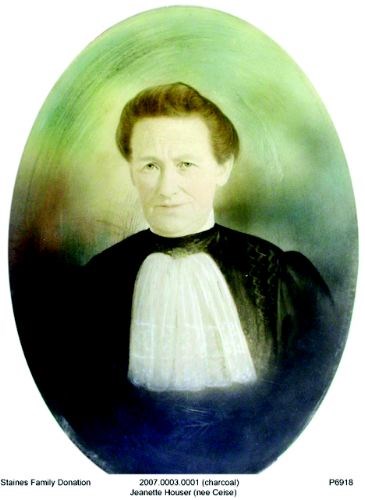Prostitution is an aspect of camp life, such as in the gold mining town of Barkerville, that was at one time socially accepted, and quite often the women involved were highly respected as both business people and individuals.
Often, however, moral turpitude placed the burden of "harlot" onto innocent women.
The Hurdy Gurdy dancing girls so often spoken of in the popular early history of Barkerville are a case in point.
There is no direct proof implicating these women with selling sex - they were known more for their participation in dances where large hooped skirts gave them the appearance of ringing bells. Despite this, however, the question of whether they were prostitutes persists.
One family's recollections indicate that there was a deeper story in which the Hurdies played a substantially different role - although even that is not entirely clear.
John Houser arrived on Williams Creek, the site of Barkerville, in 1862. For a time, Houser brought young women to dance in the halls of the saloons of Williams Creek.
Houser and his siblings were involved in entertainment - he played violin for the San Francisco philharmonic during the 1860s, his sister gave piano concerts well into the 20th century, and his brother built the largest music store in San Francisco.
John Houser's violin now sits in the Houser house at the Richfield end of Barkerville's main street with a rattlesnake tail inside it to help sustain notes.
There is no suggestion there was anything inappropriate about Houser's involvement in the entertainment business and the Hurdies, as entertainment was a huge part of the family tradition.
We don't know much about the women Houser brought here, as many of the Hurdies eventually found husbands and changed names, losing their own personal identities to the family unit.
But his descendants assure us they were all relatives from Germany, and through general historical facts we can try to understand why these young women would venture to the frontiers of civilization to face the whispers and suggestions of impropriety, and all the associated hardships.
The fact that there was a major economic collapse in 1849 equivalent to the depression of the 1930s paints a picture of great poverty amongst the masses of Europe. The frontier may have well been the golden opportunity: there was the potential to find not only a good man amongst the miners, but also one lucky enough to make a fortune.
There would be little opportunity for such a match in Europe.
Innocent people are sometimes painted as "bad" based on false assumptions simply because they don't conform to someone else's idea of what is "proper."
As one informant suggested about a woman of ill repute during the 1930s, she wasn't a prostitute, but a party girl.
Surprisingly, some accusers paint their victims this way because they have a secret desire to be "bad" themselves. So bad people could very well be good, and vice versa, when sifting through historical "facts."
Facts are accumulated by people with their own ideas, and often to support those ideas. Bias is inherent in any history and any historian who thinks that they have presented the facts without bias is delusional.
Not only will a new fact get in the way, it might bring down a house of cards supported by moral turpitude.



